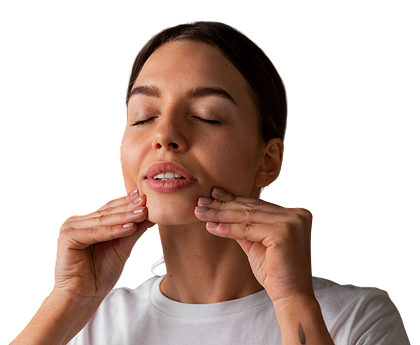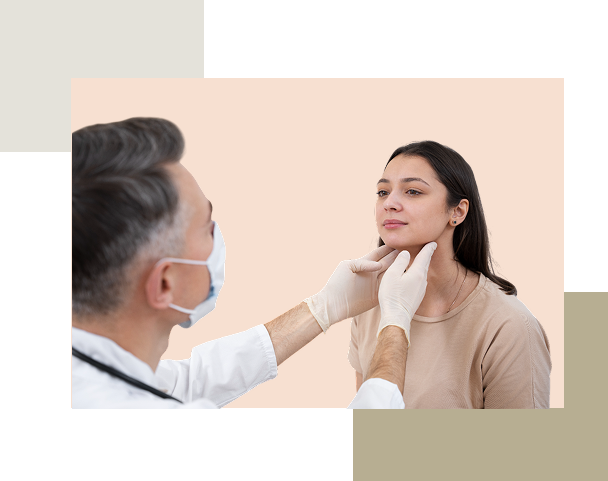

جراحی اصلاح فک (که به عنوان جراحی ارتوگناتیک نیز شناخته میشود) برای اصلاح عدم تعادل و ناهنجاریهای فک بالا و پایین، به ویژه مواردی که تنها با بریس قابل اصلاح نیستند، استفاده میشود. در برخی موارد، دندانهای بیمار به درستی روی هم قرار نمیگیرند (مال اکلوژن)، راه هوایی در طول خواب مسدود میشود (آپنه خواب انسدادی) و/یا تعادل و ظاهر صورت نیاز به بهبود دارد. برخی از این مشکلات ممکن است ناشی از بیماریهای جمجمه و صورت مانند شکاف لب، شکاف کام و کرانیوسینوستوز سندرمی باشند.
قبل از جراحی، متخصص ارتودنسی ما از اسکن CAT و شبیهسازی مجازی سهبعدی برای ایجاد اسپلینتها و مدلهای پیشرفته و مخصوص بیمار استفاده میکند. این به جراح کمک میکند تا نحوهی مرتب کردن دندانها را به روشی خاص تعیین کند تا به پیکربندی مناسب با دقت ۱ میلیمتر برسد. همچنین ممکن است بیمار مجبور باشد برای یک سال یا بیشتر از بریس استفاده کند تا به تراز صحیح دندانها در فک بالا و پایین کمک کند.
در طول جراحی، پزشک استخوان را میشکند و آن را به موقعیت مناسب منتقل میکند، که ممکن است نیاز به جابجایی فک بالا، فک پایین یا هر دو داشته باشد.
علاوه بر جراحی فک (یا به جای آن)، میتوانیم ژنیوپلاستی انجام دهیم، که در آن چانه را تغییر شکل میدهیم، جلو میآوریم یا کوتاه میکنیم تا نیمرخ صورت شما تکمیل شود.
نارسایی دریچه کامی-حلقی (VPI) یا گفتار نامفهوم به دلیل خروج هوا از بینی (به دلیل کشیدگی کام)
مشکلات مفصل گیجگاهی فکی (TMJ)
نیاز به رویههای اضافی/تکرار
بیشتر بیماران پس از جراحی فک، یک تا دو شب را در بیمارستان میگذرانند. (بیمارانی که فقط تحت عمل ژنیوپلاستی قرار میگیرند، اغلب همان روز عمل به خانه برمیگردند.) ممکن است دچار تورم شوید و به شما داروهای مسکن داده میشود تا به خانه ببرید.
کشهای لاستیکی معمولاً روی بریسهای شما قرار میگیرند تا شما را به حالت جدید بایت هدایت کنند. حتماً دندانها و دهان خود را تمیز نگه دارید. ممکن است لازم باشد چهار تا شش هفته پس از عمل، رژیم غذایی نرم یا پوره داشته باشید.
ممکن است پس از جراحی فک، چندین نوع دارو برای شما تجویز شود.
داروهای مسکن: فقط باید در زمانی که احساس ناراحتی قابل توجهی دارید مصرف شوند. اگر درد شدید باشد، میتوان از داروهای مسکن تجویزی استفاده کرد. با این حال، اگر فشار یا ناراحتی خفیفی احساس شد، سعی کنید از داروهای بدون نسخه با قدرت کمتر مانند پاراستامول، نوروفن و غیره استفاده کنید. سعی کنید مسکن خود را طوری تنظیم کنید که شبها مصرف شود تا خواب خوبی داشته باشید.
آنتیبیوتیکها: ممکن است برای شما آنتیبیوتیکهایی مانند آگمنتین و غیره تجویز شود. این داروها باید در فواصل زمانی مناسب، همانطور که در زمان ترخیص توضیح داده شده است، مصرف شوند. مطمئن شوید که هیچ دوزی را تا زمان اتمام دارو فراموش نمیکنید. توجه: برخی از انواع آنتیبیوتیکها میتوانند اثربخشی قرصهای ضدبارداری را کاهش دهند. در صورت هرگونه نگرانی، لطفاً با متخصص زنان خود تماس بگیرید.
داروهای ضد احتقان: پس از جراحی ارتوگناتیک، به خصوص جراحی فک بالا، ممکن است گرفتگی قابل توجهی در بینی و سینوسها ایجاد شود. در صورت لزوم، میتوان به مدت ۷ تا ۱۰ روز پس از جراحی، از داروهای ضد احتقان مانند قطره بینی اوتریوین و غیره استفاده کرد.
اسپری بینی: میتوان از آن در فواصل ۴ تا ۶ ساعته برای بهبود تنفس از طریق بینی استفاده کرد. برای جلوگیری از استفاده بیش از حد از اسپری بینی، میتوان آن را با اسپری یا اسپری بینی نمکی ساده جایگزین کرد. این اسپریها را میتوان از داروخانه خریداری کرد. اگر جراحی فک بالا انجام دادهاید، حداقل تا ۱۴ روز پس از جراحی، فین نکنید.
پماد لب: در ده روز اول بعد از عمل از وازلین استفاده کنید. به اندازه کافی پماد روی لبها نگه دارید تا مرطوب به نظر برسند.

من از نتایج جراحی لیپوساکشن، BBL و بزرگ کردن/لیفت سینه که توسط دکتر فدایی انجام شد، بسیار راضی هستم. از ایشان و تیم استثناییشان صمیمانه تشکر میکنم.

من در تاریخ ۸ مارس ۱۴۰۳ جراحی لیفت گونه، پیشانی و لب مرکزی را در مطب دکتر انجام دادم. میتوانم بگویم که پس از دو هفته، کارش یک شاهکار بود. جراحی با دکتر فدایی بزرگترین لطفی بود که برای خودم انجام دادم. تیم پشتیبانی قوی. در هر زمان از شبانهروز در دسترس بودند. در کل، اخلاق و رفتار او با بیمار بهترین بود و من هزار بار راضی هستم.

یک بیمار از انگلستان را به او معرفی کردم. او در جراحی پلاستیک صورت بسیار ماهر و با تجربه است و بیمار من از نتایج بسیار راضی است.